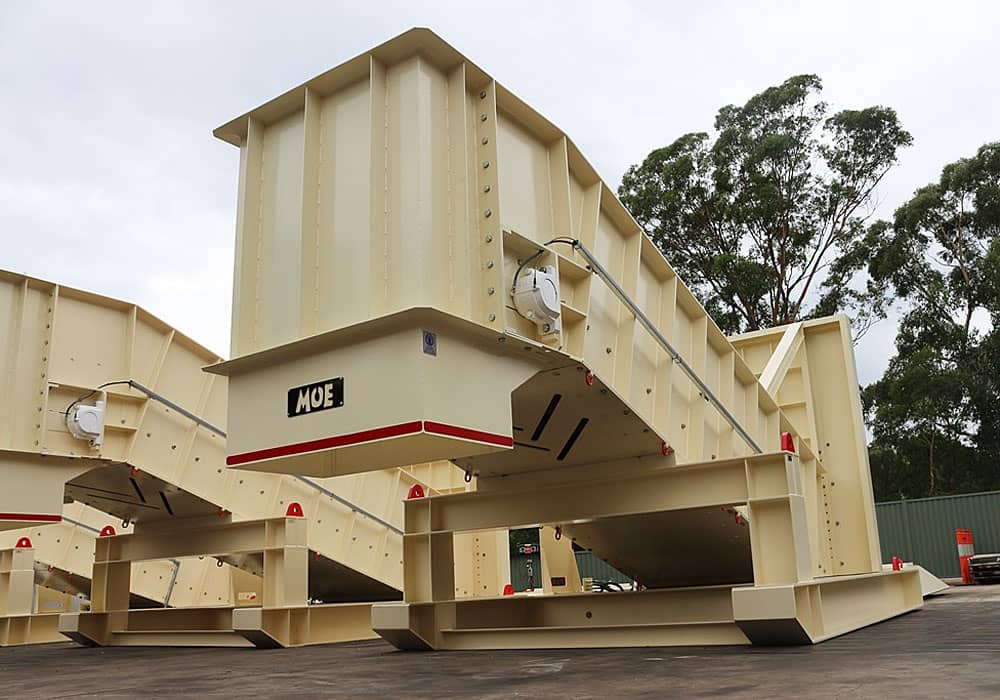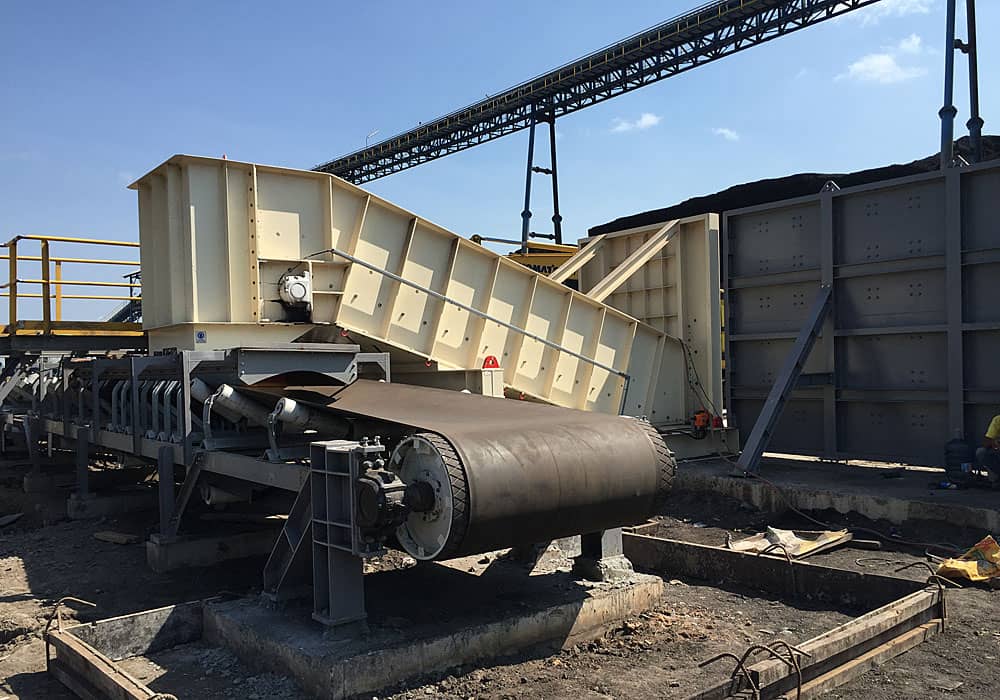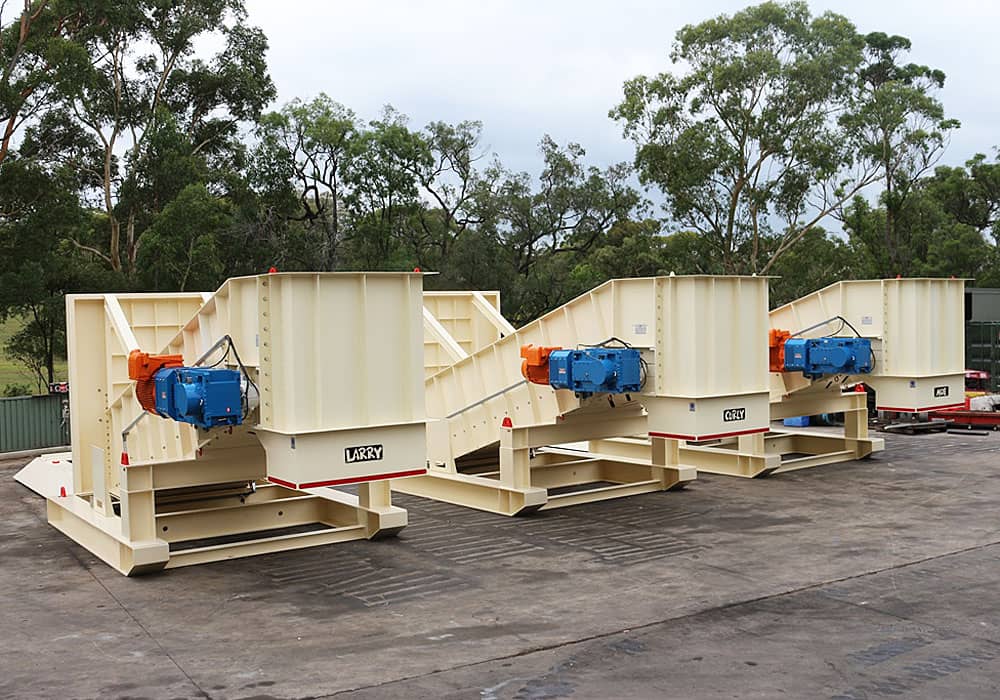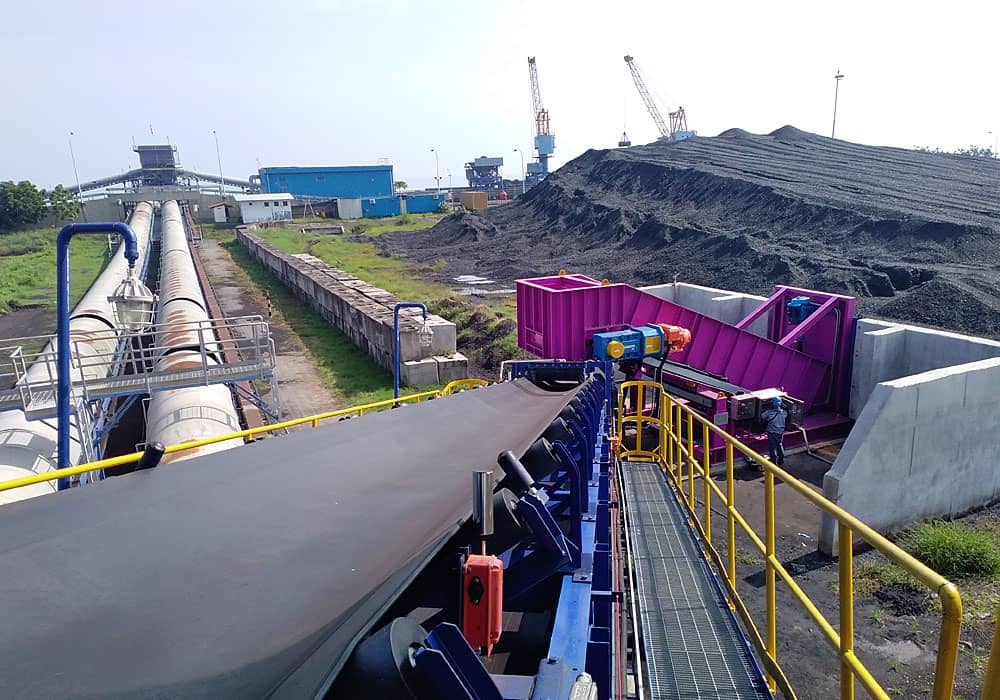Chain Feeder / Reclaimer
More Information
Australia Tel: +61 (0)2 4389 6191
Indonesia Tel: +62 21 3040 4422
New Zealand Tel: +64 (0)7 850 2610
South Africa Tel: +27 (0)10 900 2055
Description
HMA Materials Handling and On-Trak Engineering work in partnership to design and manufacture our Heavy-Duty Reclaim/Chain/Apron Feeders. These are constructed to suit the heaviest of conditions, covering the majority of product types. The final size of each unit can be modified to suit the end user’s requirements.
The On-Trak Reclaim Feeders from HMA Materials Handling have right angle shaft-mounted gear reducers and an electrical control panel complete with a feed system or discharge hopper capable of feeding material onto a belt at a variable rate from 500 to 2500 tph, with options for an electric or hydraulic drive.
The deck materials range from 250 Grade mild steel up to Chromium Laminate, with the thickness determined by the application and potential wear rates from the material being conveyed. A separate hydraulic power unit (HPU) may be required if hydraulically driven as opposed to an electric drive, which includes a suitably sized motor mounted on a separate dedicated frame assembly.
Design features include:
- Manually-adjustable flow control gate
- Variable frequency drive (VFD) to allow the required flow rate to be varied through the control system if the electric drive option is used
- A hydraulic system that can vary the drive speed through a PWM controller if a hydraulic drive option is used
- Round Link Mining Chain or Engineered Chain
- Flight bars can be fabricated or cast, depending on the method of attachment chosen at the design review stage with all stakeholders
- Our bearing housings are typically billet steel instead of cast iron for added security to prevent failures
- Our flight bars are larger than standard for longer-lasting performance
- The system can also include auto tensioning of the chain via the local hydraulic power pack if required, meaning less maintenance and improved operational performance
- The conveyor shafts and sprockets are designed to suit the final machine with the aim to putting less stress through each sprocket that, in turn, allows for a longer expected design life
- The system includes numerous devices for monitoring the performance, including feedback into the local control system for alarming and operational purposes





